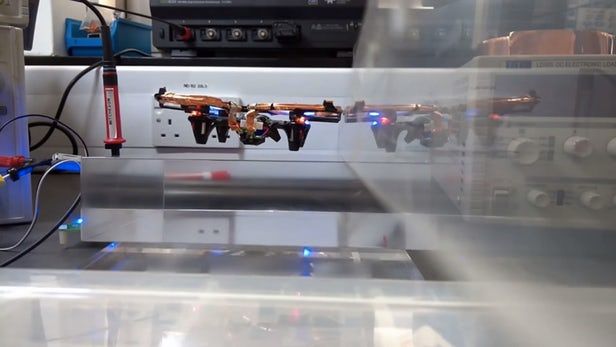Given that the battery life of most multicopter drones typically doesn’t exceed 30 minutes of flight time per charge, there are many tasks that they simply can’t perform. Feeding them power through a hard-wired tether is one option, although that only works for applications where they’re hovering in place. Scientists at Imperial College London, however, are developing an alternative – they’re wirelessly transferring power to a drone as it’s flying.
For their study, the scientists started with an off-the-shelf mini quadcopter. They proceeded to remove its battery, add a copper coil to its body, and alter its electronics.
The researchers also built a separate transmitting platform that uses a circuit board, power source and copper coil of its own to produce a magnetic field. When placed near that platform, the drone’s coil acts as a receiving antenna for that magnetic field, inducing an alternating electrical current. The quadcopter’s rejigged electronics then convert that alternating current to direct current, which is used to power its flight.









Comments are closed.